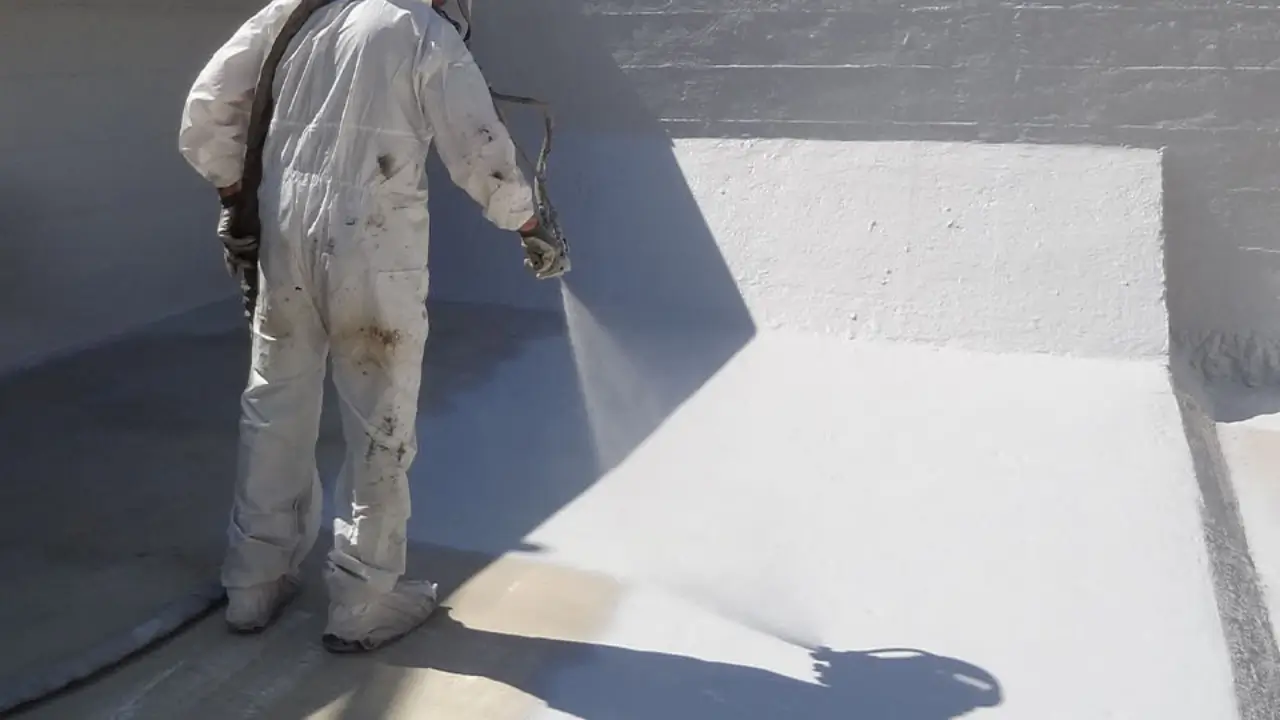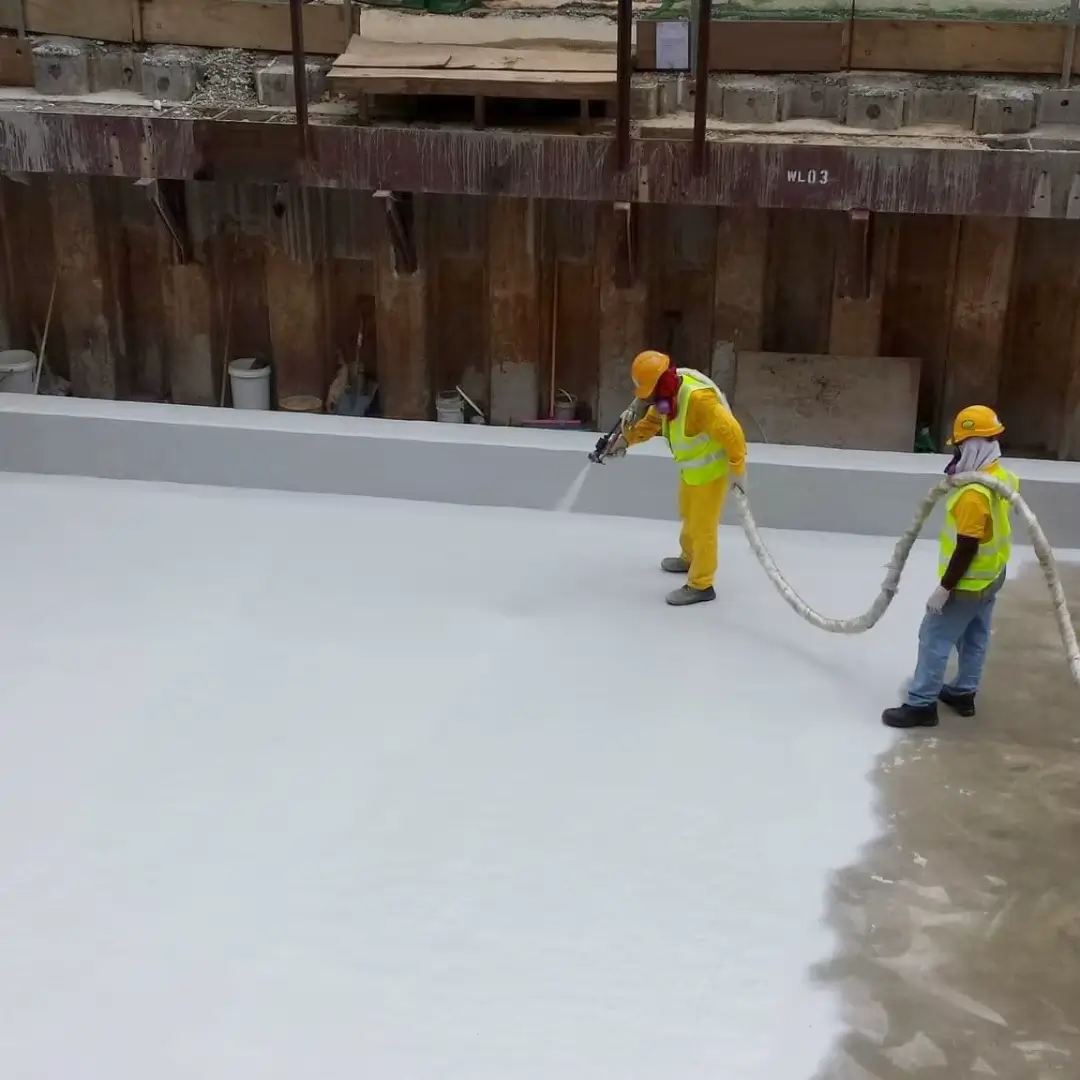
In today’s construction industry, waterproofing is no longer optional—it is a fundamental requirement for structural durability and long-term performance. Among the most advanced waterproofing technologies available today is the polyurea coating system. But what exactly is polyurea waterproofing? How does it compare to conventional methods? And most importantly—how long does polyurea last?
This article explores these questions in detail and highlights why polyurea has become the preferred choice in many high-performance applications.
What Is Polyurea Waterproofing?
Polyurea is a two-component elastomeric coating formed by the reaction of isocyanate and resin. The components are applied using high-pressure, heated plural-component spray equipment, allowing the material to cure within seconds. The result is a seamless, joint-free, and fully monolithic membrane with exceptional waterproofing capabilities.
Due to its flexibility and performance, polyurea is commonly used in:
- Podium decks and rooftop terraces
- Industrial roof coatings
- Landscape underlayers
- Swimming pools and concrete water tanks
- Bridge deck waterproofing
Its high elasticity, superior abrasion resistance, and chemical resilience distinguish it from traditional waterproofing systems.

Lifespan of Polyurea Waterproofing
When correctly specified, applied over a properly prepared substrate using the right primer, polyurea systems can offer a service life of 25 to 50 years.
This is significantly longer than the lifespan of traditional bituminous or cementitious waterproofing systems. While bitumen-based membranes often last only 5 to 10 years, well-maintained polyurea systems can easily perform for decades—even under harsh conditions.
However, this longevity is subject to environmental exposure, mechanical stress, UV radiation, and application quality.
Key Factors That Influence Polyurea Durability
1. Surface Preparation & Priming
Substrates must be structurally sound, clean, dry, and free of dust, oils, or old coatings. Proper priming is essential for chemical bonding. Inadequate surface prep or incorrect primer selection can lead to delamination over time.
2. Application Quality & Equipment Calibration
Polyurea requires precision spraying with dedicated airless, high-pressure equipment. Accurate control of mix ratio, temperature, and pressure is vital. Incorrect parameters can compromise cure speed and membrane integrity.
3. Type of Polyurea Used
There are two main categories:
- Pure (100%) polyurea, offering exceptional elasticity, chemical resistance, and longevity.
- Hybrid polyurea, typically more cost-effective but with reduced performance characteristics.
For demanding applications, pure polyurea is recommended for its extended lifespan.
4. Environmental Exposure
UV radiation, thermal cycling, and mechanical loads can degrade coatings. In exposed applications, use UV-stable polyurea or apply a UV-resistant aliphatic topcoat to protect color and surface integrity.
5. Routine Inspection & Localized Repair
Though largely maintenance-free, polyurea systems benefit from annual inspections—especially in high-traffic zones. Damaged areas can be repaired seamlessly, as new material chemically fuses with the existing membrane.
Comparison with Other Waterproofing Systems
| Feature | Bituminous Membrane | Cementitious/Brush-on | Polyurea |
|---|---|---|---|
| Typical Lifespan | 5–10 years | 5–8 years | 25–50 years |
| Application Speed | Moderate | Slow | Very Fast |
| Seamless Coverage | No | Yes | Yes |
| Elasticity | Low | Moderate | Very High |
| Chemical Resistance | Moderate | Moderate | Excellent |
| UV Resistance | Low | Moderate | High (with topcoat) |
As shown, polyurea significantly outperforms other systems in longevity, flexibility, and durability.
Best Practices for Selecting and Applying Polyurea
✔ Choose the Right System
Select pure or hybrid polyurea based on project demands. For example, root-resistant pure polyurea is ideal for below-landscape waterproofing.
✔ Use Certified Applicators
Polyurea is not a DIY system. It must be applied by trained professionals with knowledge of spray techniques and safety protocols.
✔ Maintain Equipment
Ensure the spray system is well-calibrated and regularly serviced. Temperature and pressure settings must be verified on-site before each job.
✔ Pay Attention to Critical Details
Drains, joints, and transitions require meticulous attention. The seamless nature of polyurea allows for flawless detailing across complex geometries.
Recommendations for Maximizing Service Life
- Annual Visual Inspections: Especially in vehicular traffic zones or rooftop decks.
- Spot Repairs: Cracks or punctures can be repaired easily and integrally.
- UV Protection: Apply a UV-stable topcoat in exposed areas to prevent discoloration and surface degradation.
A Long-Term Investment in Durability
In conclusion, polyurea waterproofing delivers unmatched durability, rapid application, and exceptional physical performance. While the initial cost may appear higher than traditional methods, it dramatically reduces lifecycle costs by eliminating frequent repairs and extending replacement cycles.
With the right product, experienced applicators, and quality equipment, a polyurea system will protect your structure for decades—enhancing both structural resilience and property value.
At Dryfix, we offer a complete portfolio of 100% Pure Polyurea, Cold-Applied Polyurea, and Hybrid Polyurea systems, tailored to your project’s specific demands. With superior crack-bridging capabilities, exceptional elasticity, and rapid set times, our solutions deliver maximum durability and total waterproofing assurance—from rooftops to parking decks, from industrial floors to landscape subgrades.
